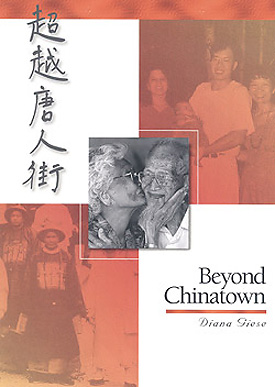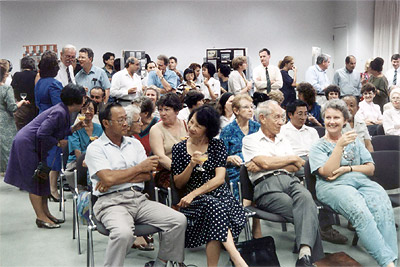|
Read more, Beyond Chinatown‘Beyond the European observers, there have always been stories handed down within Chinese clans and families, stories that have until recently remained untold to the wider community. These oral histories select what matters to the teller, the trickle of personal truth from the torrent of memory. The more unstructured the enquiring interview, the stronger the emergence of what is important to the speaker. These histories emphasise the informants’ views of history’s process, against official representations, earlier chroniclers. They may contradict what has been glossed over or de-emphasised. Theirs are voices which have been shouted down in the great political and economic debates. Oral history extends what we know about the past beyond what the officially validated, the literate and articulate, have to contribute.
Now that an official policy of multiculturalism has made it acceptable for Australians to have multiple identities, the sons, daughters, grandchildren and great-grandchildren of many of those who sought only to forget the rough and violent times of poverty and segregation, are speaking out. They are themselves questioning, researching and preserving, convinced of the value of their own particular part in the drama of building modern Australia. These Chinese Australian voices reinterpret history for our times: the context in which they are presented is the run-up to the Asia-Pacific century. Now that the public image of Chinese Australians has changed, such stories are welcomed. As the isolationist policies of White Australia gave way to assimilation, then multiculturalism; as the Communist fanatics of Cold War China dwindled into something more human, less threatening and frightening; as it became possible to trade with and visit China, and meet real Chinese on their home ground, the popular image of the Chinese has changed in Australia. Once "despoilers of the goldfields", they are now heroes and heroines of our pioneering past. Once linked together in impenetrable secret societies, they are now desired business associates and trading partners. Their strange, noisy and ungodly rituals have become part of popular cultural events. Australians from a variety of backgrounds are seeing the Chinese, those who live here and those who live elsewhere, as heirs to a rich and boundlessly fascinating cultural tradition.’
‘These stories reflect the characters of the tellers. One informant may see another as exaggerating, over-colouring, sensationalising, their stories as scurrilous and subversive. Those who wish to talk of scandal or failure may be tactfully silenced, or discredited as rumour-mongers ("Nothing like that in our family"). The community’s licensed storytellers may close ranks against someone with another story to tell, a discordant one. One clan or family may loom large in the storytelling of one member, but seem less like heroes or heroines to others. Memory is notoriously unreliable, argue some who have themselves produced distinguished oral history projects. Such history is fluid and negotiable. Often its stories are unverifiable. It sets tone, feelings, nostalgia, against elegant theory, or the long, slow trudge through cumulative empiricism. Some interviewees may have their stories well prepared, in good order. They may be wise to the needs and prejudices of the researcher, the historian, the journalist. They may set their own agendas. Having offered a questioning photographer a cold drink, one feisty 89-year-old became chillier. "Don’t you tape me!" she instructed. "Don’t you dare take my photograph! Don’t put me in the newspaper!" The photographer went on snapping. Later he sent her pictures which, her daughter says, she was glad to have… It was only when I began to listen to the voices of Chinese Australians retelling the stories of their history—those that have been written down in someone else’s version, those mistranscribed, those never before told— that I felt I was approaching something authentic about those times, something true to the lived experience of all our forebears, something that stretched back through family memories to the time when the first man stepped off the first boat in Port Darwin in 1874…’
‘We are all involved from birth to death in a kind of tension between home and homelessness, movement and rest, rootedness and disconnectedness. The aim of defining identity is to bring the self, the place and the others into some sort of dynamic and creative relationship, to feel oneself into the physical place, into the landscape with the "others" in it. All the many contributions to our history, from the school project to the most sweeping historical overview, are episodes in the great collaborative adventure in which we seek to discover who we are, and are becoming.’2
|
|||||
|
|
||||||



